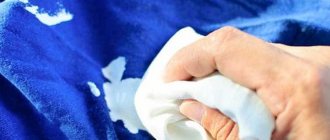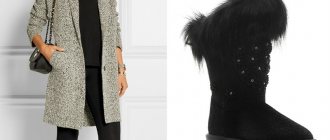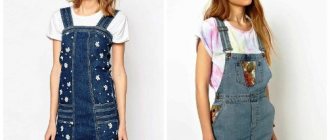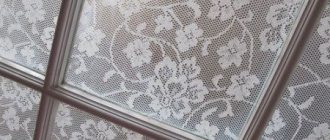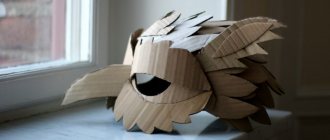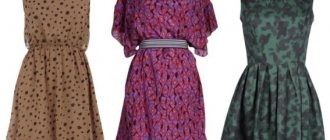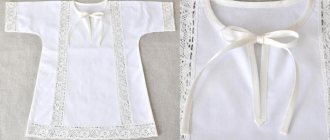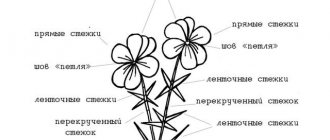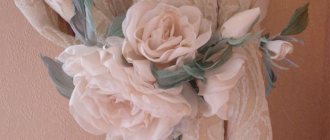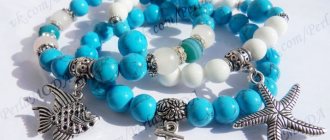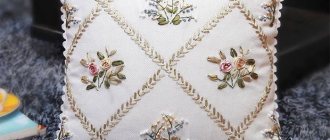Gluing is required in various situations; probably everyone has done this process. Therefore, it is necessary to have adhesives in the house; a huge number of adhesive solutions are presented on the construction market. This variety has a positive side, because everyone can choose the right option for a specific purpose. On the other hand, it confuses non-professionals, and the choice becomes difficult. We will talk in detail about which glue is best for gluing different materials together below.
What is the strongest glue in the world?
If we talk about the strongest glue in the world, then we turn to the Guinness Book of Records. It is known that world records are recorded there. So in 2021, the German company Delo produced a reliable glue, which it decided to test.
For this purpose, the solution, which after testing received the title of the strongest glue, was applied to a small metal cylinder. The cylinder was hooked to a crane hook, and a truck weighing 17.20 tons was lifted into the air on it. The lifting height of the truck was equal to a meter. The strongest glue held a heavy truck in this position for 60 minutes.
The squad was preparing to set a record. The base used was epoxy resin. The company's adhesive solutions are used to create reliable bonding of parts in cars and mechanical engineering.
The strongest glue held a heavy truck for 60 minutes.
Textile glue UHU Textil
Volume : 19 g.
Price : 331 rub.
UHU Textil glue is designed for gluing a variety of fabrics: felt, coconut thread, jeans, linen and many other fabrics. The glue cannot be used on silk, as well as on those fabrics where the proportion of synthetic fibers is more than 60%. When dry, the substance acquires a transparent color and retains elasticity.
Gluing surfaces couldn't be easier: apply glue to one surface, and then connect it to the other, pressing lightly. It only takes 5 minutes to dry. After 30 minutes, the fabric can be ironed to give it stability.
Loctite composition with record strength
If we talk about the most powerful glue, it is necessary to describe Loctite glue. He also made it into the record books. So, with just nine drops of the product they were able to lift two cars weighing five tons.
This product was developed in Germany by Henkel. German strong adhesive is used to glue a variety of materials together. The adhesive solution is chosen in production by European auto companies. The anaerobic composition allows you to obtain a super stable compound; the action occurs in the absence of air. The result is a layer that does not react to lubricants and oils.
Under this name, the company produces more than one adhesive solution; there are different types suitable for specific purposes.
German strong adhesive is used to glue a variety of materials together.
UHU Alleskleber universal glue
Volume : 60 ml.
Price : 189 rub.
This adhesive is suitable for a variety of materials, be it porcelain, ceramics or fabric. The glue is made on the basis of synthetic resin, which came into use relatively recently - at the beginning of the last century.
The glue is water resistant, so the fabric can be washed. UHU Alleskleber can withstand temperatures up to +120 degrees, ideal for household work, as well as hobbies and modeling. Before work, do not forget to prepare the surfaces - they must be clean and dry. The glue is made in Germany, which inspires confidence among many.
Selection Criteria
It is impossible to recognize one composition as the best glue. After all, the compositions are developed to suit the characteristics of each material. So there are special adhesives for wood, plastic, tiles, wallpaper, rubber, metal, foam and other materials. Some adhesives create reliability, but the process takes a long time. There are quick adhesives that help quickly seal up flaws.
When choosing, you need to take into account a number of criteria:
- Operating conditions of the product being glued;
- Working conditions, ease of use;
- Thickness of the adhesive seam;
- Type of materials that will be connected;
- Toxic properties of the solution;
- Seam elasticity.
The compositions are developed to suit the characteristics of each material.
Permanent adhesive for fabric PEBEO Setacolor
Volume : 45 ml.
Price : 1,020 rub.
Whatever you want to glue, PEBEO Setacolor will do it perfectly. It is suitable for fabric, cardboard, wood and other materials. The fabric can be washed 48 hours after the glue has been applied to the product. Optimal temperature: 40 degrees. The composition does not tolerate freezing.
PEBEO is a French company that also produces paints, thanks to which artists create incredibly beautiful paintings! The paints of this company do not fade or peel - one can judge its products by this fact alone. The glue is suitable for any type of fabric; it is recommended to apply it with a sponge, brush or pipette (whatever you have on hand).
Choosing a strong adhesive depending on the gluing material
Which superglue and just glue is better can only be said by knowing the type of material that will be glued. Although this will not be enough, so you need to take into account the criteria discussed earlier.
The type of material is the most important criterion. Materials have different structures. For example, plastic has a smooth surface, which makes it difficult to obtain good adhesion. In this case, adhesive solutions are developed for a specific type of plastic.
Adhesive solutions are developed for a specific type of plastic.
If you need to glue vinyl wallpaper, then any wallpaper adhesive will not work. You need to choose the strongest glue that can withstand the heavy weight of the canvas.
You need to choose the strongest glue that can withstand the heavy weight of the canvas.
When it comes to dental adhesives, the criterion of safety for human health is important. Based on these examples, we can say that the best option would be to use specialized tools that take into account all the features of the work. The purpose of the glue is always written on the packaging of the composition, this simplifies the choice of product.
The manufacturer also describes operating rules in the instructions; some products require compliance with safety precautions.
When it comes to dental adhesives, the criterion of safety for human health is important.
How to glue false nails at home
How to glue your nails at home?
To glue your nails at home, you don’t need any special equipment, but you should still have some items on hand:
- overhead forms;
- glue (usually comes with the molds);
- wipes for removing excess glue;
- manicure accessories;
- means for degreasing nail plate;
- cup for hot water.
Remember that you cannot glue false nails if there is a fungal infection on the plate; artificial tips will only worsen the situation.
Let's get to work. To do this, remove any remaining old polish on your nails and do a manicure using tweezers.
It is advisable to do a high-quality manicure, remove as much skin as possible around the nail, while pushing it away with an orange stick. Most often, the included nails come in a standard size, so it will take some time to file the false tips to the desired shape and size. The nail should cover its own nail plate and not extend beyond it. The nail plate should be smoothed using a fine abrasive file, degreased and coated with base coat. Then a special glue should be applied evenly to the nail in a thin layer and it is better to glue the artificial form right away to avoid drying.
The false nail is applied in the direction from the cuticle, the closer to the edge of the cuticle, the better. The remaining glue that comes out after pressing the tips onto the nail is removed with a napkin. Apply polish to your nails, paying close attention to the areas where your nail adheres to the false nail.
The main task is to glue the nail correctly the first time, because the glue sets almost instantly, and it will not be possible to remove the incorrectly installed form quickly. But even if you definitely didn’t succeed in sticking it, don’t despair! The situation can be easily corrected by removing the failed nail and re-gluing it. To do this, pour hot water into a bowl of water and place your finger there for 10 or 15 minutes.
After softening the adhesive base, carefully peel off the tips, preferably starting from the area near the cuticle. Remains of glue from the surface of the nail can be removed with a solvent or cut off, which is not recommended, since you can easily cut off the top layer of the nail plate and damage the nail. After removing the form from the failed nail, repeat the procedure of degreasing, applying glue and gluing itself.
Epoxy resin
Epoxy can bond parts together for many years. You can purchase any brand of solution. Hardeners ensure the layer's resistance to a variety of acids, creating a very strong connection. In everyday life, it is possible to use epoxy, for example, for gluing shoe soles, because it is waterproof. Many craftsmen use resin to create decorative elements and original jewelry.
Epoxy can bond parts together for many years.
Krylon spray adhesive
Volume : 400 ml.
Price : 995 rub.
Aerosol adhesive Krylon spray adhesive is ideal for artistic and decorative works. It does not contain acids, so you will not see any stains on the fabric. In addition to paper, glue is also used for gluing:
- parchment;
- paper;
- canvas;
- photos;
- decoupage, etc.
Before use, be sure to treat the product: it must be clean. The glue is applied from a distance of 20-40 cm in a smooth movement from left to right. Since the can is flammable, it should not be sprayed near a fire. It is advisable to ventilate the room when working. The glue is made in the USA.
"Ground Hide Glue"
It may be necessary to glue wooden parts so that the joints are not visible. Then “Ground Hide Glue” is a rational choice. It has high strength and does not emit any odor. It is convenient to apply, the dose is adjustable, while the main part does not harden, and also has a transparent structure. Suitable for gluing different types of wood together.
It has high strength and does not emit any odor.
Technique for using adhesive composition
Before using PVC and other fabric adhesives, it is important to pay attention to the instructions for use, as they differ depending on the composition.
The list shows how to use the most popular options:
- When using a rubber compound, both elements are coated, pressed against each other and placed under a press.
- The perchlorovinyl mixture is generously spread over one of the elements and wait until it dries completely. Then the composition is applied to the second part. The parts are pressed against each other, held for a few seconds, and left until completely dry.
- Nitrocellulose glue is spread on one of the parts, after which the elements are connected and put under the press.
- Waterproof glue is spread on a surface degreased with alcohol or nail polish remover. The parts are fastened together and put under the press for a day.
PVA glue"
PVA is known to many people and has not lost its popularity for a long time. Due to its positive properties, it is used for various situations. At the same time, manufacturers have developed many compositions to improve properties for working with specific materials. It works well when gluing objects that will later be used under low-temperature conditions.
It works well when gluing objects that will later be used under low-temperature conditions.
Step-by-step instructions with superglue
It is strictly not recommended to glue false nails with superglue. Firstly, this type of glue is quite toxic and can easily penetrate the body through open nail scales. Secondly, there have probably been cases in any person’s life when a small drop of super glue got on the skin of their hands. Was it easy to wash it off? Yes, it’s almost impossible, the glue comes off along with the skin. Now imagine how it is possible to remove nails glued to such glue? Most likely, only with your own nails.
But if the decision to glue your nails with superglue is made, you should adhere to the following rules:
- There is no need to degrease the native nail plate; this layer will serve as a “safety airbag”.
- You need to apply super glue to the underside of the false mold, and not to your own nail.
- When gluing, press the form against the nail for no longer than three seconds.
There are two ways to remove nails glued with superglue:
- soak your nails in hot water (temperature no less than 45 degrees) for about 20 minutes. The superglue should soften and come away from the live plate. Under no circumstances try to tear off the false nail by the long edge; to remove it, just pry it with something sharp near the cuticle area;
- using a special solvent. Do not use regular solvent as it will burn the skin. But nail glue solvent is quite suitable. It usually comes in the form of a varnish with a brush, which is convenient for applying the solvent, avoiding sensitive areas of the skin.
After removal, a medicinal product should be applied to the nails and the cuticle should be treated with oil.
Yacht glue
Yacht adhesives must have high levels of resistance to water. Among the variety of options, “PU Max” stands out, which is chosen by many yacht and boat owners. It creates a reliable layer and sets in a short time, you need to wait 60 minutes. The glued object can be used immediately; the layer is not affected by sea water.
It creates a reliable layer and sets in a short time, you need to wait 60 minutes.
